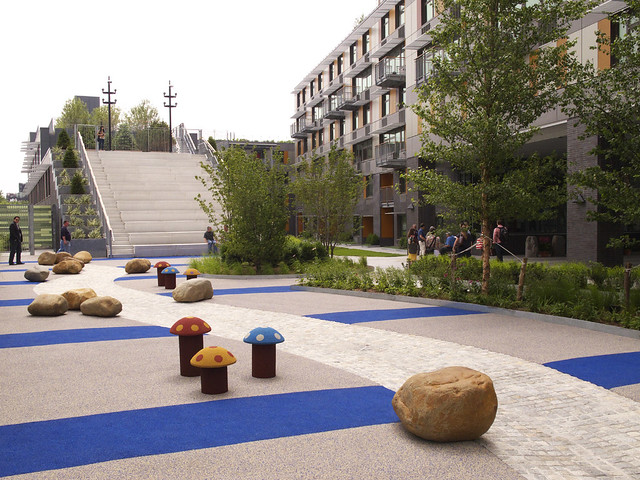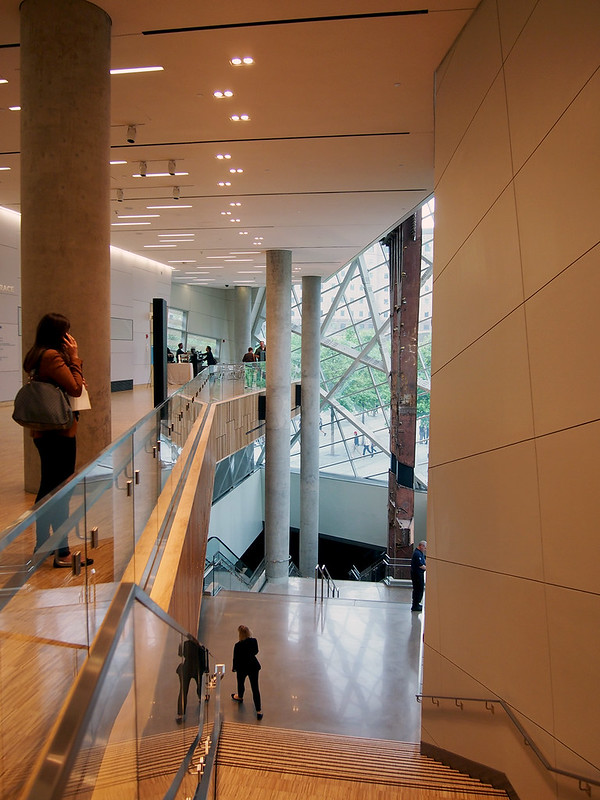The Air from Other Planets: A Brief History of Architecture to Come by Sean Lally
Lars Müller Publishers, 2014
Hardcover, 248 pages
Manhattan Atmospheres: Architecture, the Interior Environment, and Urban Crisis by David Gissen
University of Minnesota Press, 2014
Paperback, 240 pages

For the 2014 Venice Biennale, director Rem Koolhaas is asking visitors to consider the
Fundamentals of architecture. One aspect of the exhibition that opens on June 7 is
Elements of Architecture, which "will pay close attention to the fundamentals of our buildings, used by any architect, anywhere, anytime: the floor, the wall, the ceiling, the roof, the door, the window, the façade, the balcony, the corridor, the fireplace, the toilet, the stair, the escalator, the elevator, the ramp..." I'm thinking of this much-anticipated (and equally hyped, one could say) exhibition in the context of these two books because all of these elements are material entities, but Lally and Gissen are more interested with environmental "materials" – air, energy, sounds, etc. – rather than the traditional architectural palette. Which raises the question: Where does the palette of architectural elements end? And how can architects manipulate those elements outside the traditional ones to improve the environments where we live, work and play?
While Koolhaas himself has examined the role of air conditioning on architectural spaces, when we consider the environmental (meaning the substances in and around a building, not "green" concerns) implications of architecture the book that most obviously springs to mind is Reyner Banham's classic
The Architecture of the Well-tempered Environment. Considering the technological advances that have taken place since the book's publication in 1969 (not to mention the concerns of climate change that architects sometimes address), the timing seems ripe for new explorations about how architecture is literally formed, and if a revolution in architecture based on mechanical and other innovations, as portended by Banham, will take place. Lally's book looks ahead enthusiastically to scenarios where architecture is more than floors, walls, and roofs of solid materials, while Gissen's book looks back to a particular place and period – 1970s and 80s New York City – to analyze how large interior environments were restructured for the city's late 20th-century evolution.
The Air from Other Planets is like two books intertwined into one: A monograph on the work of Sean Lally's firm
Weathers, and a speculative theory of how architecture can some day be made from energy as well as solids. Lally's projects veer from installations that look at the effects of humidity, for example, to proposals for buildings where space is defined by air currents rather than walls; needless to say, the latter proposals are yet to be realized. Lally's position has one foot in the realm of science fiction and the other in architectural history, hinted at by the subtitle of the book,
a Brief History of Architecture to Come. His forward/backward approaches synthesize in the book – and are found at the root of Weathers – as a belief in the the power of architecture and the architect as an agent of change. While Lally looks to science, technology and other fields for justifying that his ideas can happen, considerations about the clients, manufacturers, and other entities that would partake in the realization of such visions is nonexistent, as if the architect willing them through designs and arguments is enough. But those entities outside the architect are a core part of Gissen's book.
As mentioned,
Manhattan Atmospheres looks at a particular time in New York City's recent history, a time that coincides with crises that led to the urban environment's deterioration. Graffiti-covered subway cars and burning buildings in the Bronx are the cliche images of New York's problems in the 1970s, and Gissen's four case studies – the Washington Bridge Extension Project, corporate atria like the Ford Foundation, the Metropolitan Museum of Art's Temple of Dendur Room, and trading floors in buildings like the World Financial Center in Battery Park City – are constructions that are positioned relative to the larger environmental degradation in the city. The spaces Gissen thoroughly and most fascinatingly examines are seen as cleaner alternatives to the outside environment, each in a different way. The Dendur Room, for example, offers a controlled environment for
a temple from a much different climate, while the trading floors must contend with the heat created by people as well as computers, the latter enabling the speedy transactions that have created 21st century New York City to a large degree.
The word and concept that pervades Gissen's book is "socionatural," which is the social construction of nature. The Ford Foundation is the most overt example of such a construction from the quartet, since it involves the transplantation of tropical plants into the year-round warm environment of the 12-story-high space, in effect creating a pleasing space for the people working adjacent to the atrium, a corporate benefit that is also open to the public. But each space in Gissen's analysis – part architectural history, part critical geography – constructs nature in some manner; or more accurately filters out the city's contaminants outside of their buildings to make the city an amenable host to certain functions. The architect is an important part of these creations, but so is the mechanical engineer, the landscape architect, the client, and the city itself.
What Gissen's analysis means for New York and other cities today and in the future is a matter of interpretation. One could venture to the extreme position that Lally might take; that formerly enclosed environments could merge with the city through barriers created by energy fields. Or perhaps the grooming of the city's spaces through pedestrianization and developer-friendly parks like the High Line have succeeded the internal environments in the city's continued evolution as a place created by and for those with money. Yet Gissen is more optimistic, envisioning that socionatural environments can be part of creating a city that is desired. If this is the case, these two books are then a call for architects to take an active role in a broader definition of design – environmental – if they want to be a major part of how cities are shaped, rather than just powerless progenitors of form.































